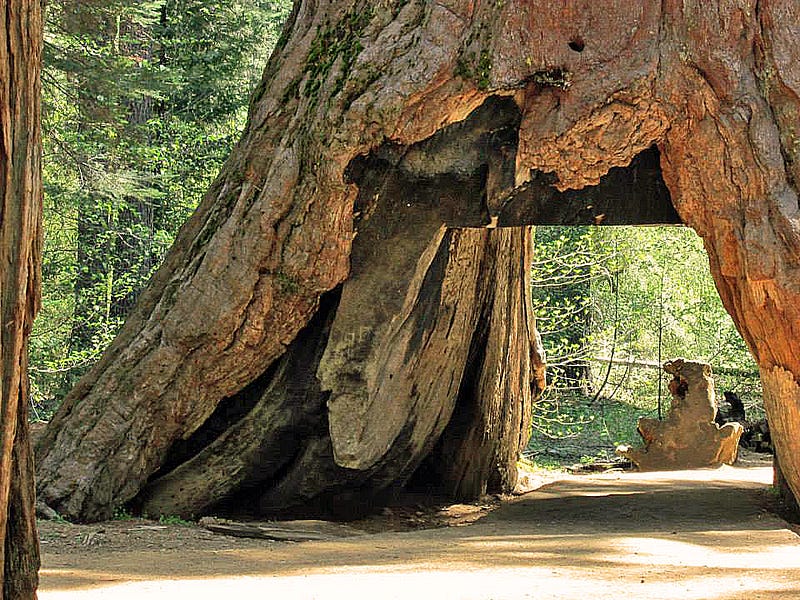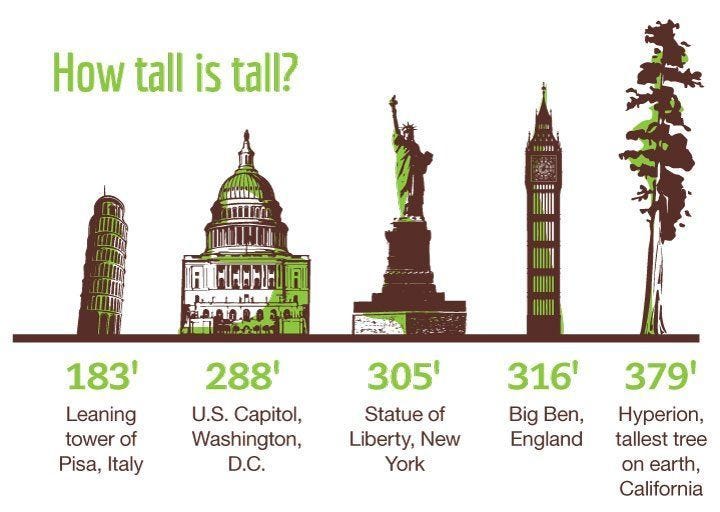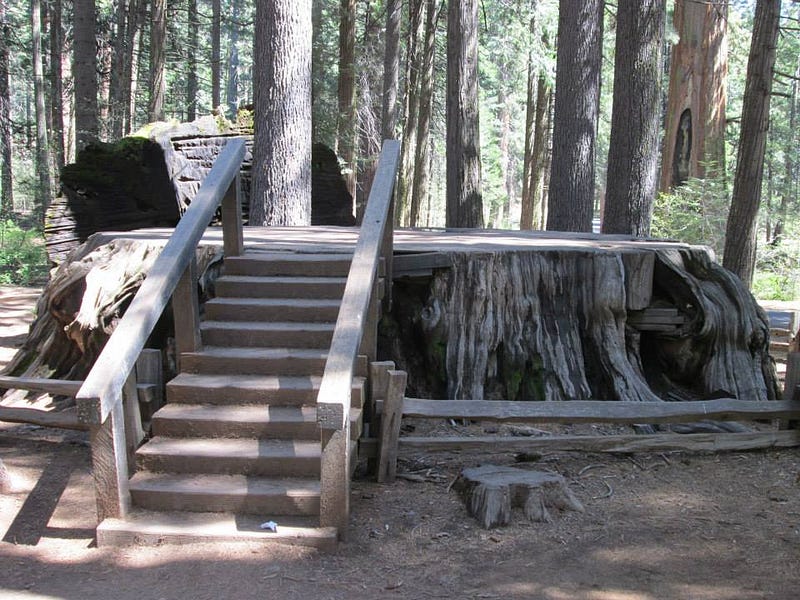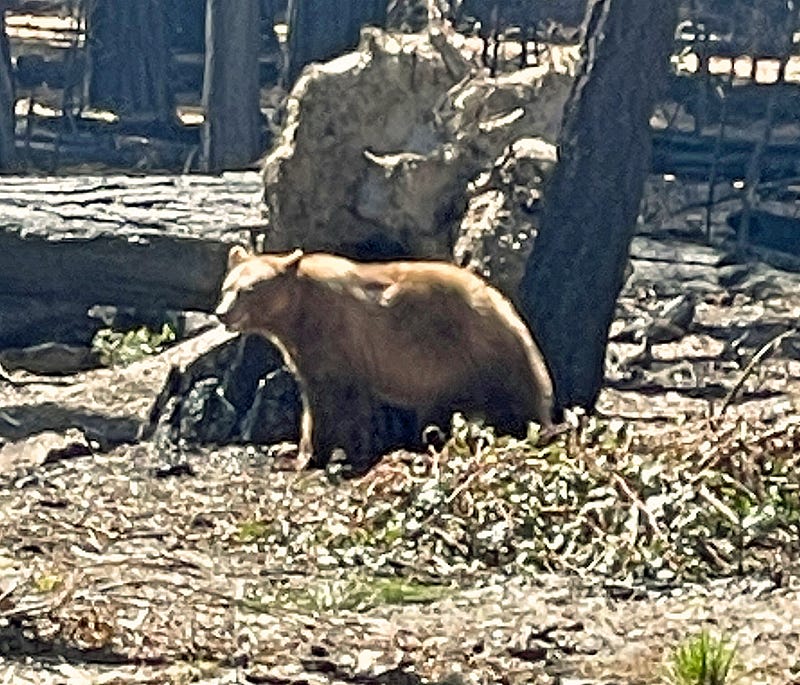California's Majestic Redwoods: A Journey Through Time
Written on
Chapter 1: Discovering the Giants
California is home to some of the most impressive natural wonders in the world, including the Giant Sequoias, specifically the General Sherman Tree. Towering at 275 feet tall, with a circumference of 102 feet at its base and an astonishing volume of 52,500 cubic feet, this tree truly embodies the grandeur of the redwoods.

My fascination with these magnificent trees began in childhood, largely due to their proximity to my hometown—just a 90-minute drive away. I vividly remember my first encounter with the General Sherman Tree at the age of 10. It was a breathtaking sight, dwarfing me at approximately 70 times my height, with its first branch soaring over 100 feet above the ground. In comparison, the Blue Whale seemed small.

Redwoods: Two Species, Two Records
While my primary interest lies with the Giant Sequoias, another redwood species—the Coast Redwood, or Sequoia sempervirens—holds the title for the tallest tree in the world. The Hyperion Tree, found in Northern California’s Redwood National and State Park, reaches an incredible height of 380 feet, outstripping both the Statue of Liberty and Big Ben. However, with a volume of only 18,600 cubic feet, it is significantly smaller in mass compared to its giant counterpart. This tree is relatively young by redwood standards, estimated to be between 700 and 800 years old, and access to it is restricted.

The Giant Sequoia, scientifically known as Sequoiadendron giganteum, is recognized for its remarkable volume and mass. It’s the tree that typically comes to mind when people discuss redwoods, as its mature forms dwarf most other trees.
Where to Find the Giant Sequoias
Giant Sequoias are classified as an endangered species, with approximately 80,000 trees remaining across 75 distinct groves on the western slopes of the Sierra Nevada Mountain Range. The majority of these groves are located in Fresno and Tulare Counties, thriving at elevations ranging from 4,600 to 7,000 feet.

Locally, this area is often referred to as the Yellow Pine Forest, dominated by Pinus ponderosa, commonly known as Yellow Pine. Notably, the elevation tends to decrease as you head north. Popular destinations to witness these awe-inspiring trees include Sequoia National Park, Kings Canyon National Park, Yosemite National Park, and Calaveras Big Trees State Park.

I frequently visit Calaveras Big Trees due to its proximity. The park features two distinct groves, and my preferred one is adjacent to the visitor center. A pleasant trail, approximately 1.5 miles long, meanders through the grove, making it accessible for strollers and wheelchairs along sections. Being at a lower elevation, it’s an easy trek without the struggle of thinner air.
What Makes These Trees Remarkable?
There’s an indescribable feeling of awe when standing among these ancient giants. It's rare to encounter a living organism that is thousands of years old. The oldest known redwood is around 3,200 years old, sprouting its seed circa 1200 BC—an era that coincides with the Trojan War. Reflecting on the history these trees have witnessed is humbling.

At the end of the Calaveras grove trail lies the stump of the Discovery Tree, a 25-foot diameter remnant of a tree that stood 287 feet tall before being felled in 1853 at the age of 1,244 years. This massive tree had a weight of approximately 2.4 million pounds.

As you gaze upward at these trees, it's striking that the first branches do not appear until you reach significant heights; for the General Sherman, this is around 130 feet. The trunks are so thick that they often measure 4 to 5 feet in diameter, a stark contrast to the trees found in most backyards, which typically measure less than 2 feet.

Interestingly, despite their massive size, the cones of these trees are relatively small, averaging about 2 inches in length. However, a single mature tree can produce around 10,000 cones, each containing 200 to 300 seeds. Annually, a tree can shed over 300,000 seeds, especially following a fire.
Droughts and Fires: The Environmental Challenge
California has faced prolonged drought conditions, impacting the annual snowpack in the Sierras and subsequently affecting vegetation growth and fire susceptibility. Giant Sequoias consume massive amounts of water; a mature tree can use between 500 to 800 gallons daily during summer months. While these trees have weathered significant rainfall changes over their long lives, recent forest management practices have disrupted the natural fire cycles essential to their survival.
Periodic wildfires play a critical role in the redwood life cycle by clearing underbrush and allowing seeds to disperse in nutrient-rich environments. The sap in redwood trees contains tannic acid, enhancing their fire resistance. However, modern fire management strategies aimed at protecting human structures have inadvertently increased fuel density, leading to more intense fires that could threaten the survival of these majestic trees.

Final Thoughts
As numerous species face extinction at an alarming rate, the Giant Sequoia is one that I hope to see endure. These trees symbolize strength, resilience, and the pure beauty of nature. The time I've spent among them—studying, meditating, and contemplating the vast changes they've witnessed—makes my own existence feel small yet incredibly rich.

This video explores the size and grandeur of California's Giant Sequoias, shedding light on their ecological importance and life cycle.
An insightful look at how to determine the size of redwoods, backed by objective facts and comparisons to other known structures.